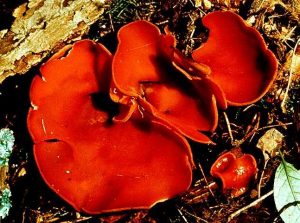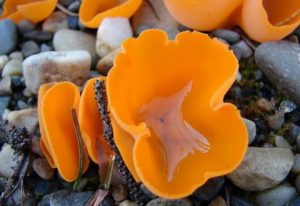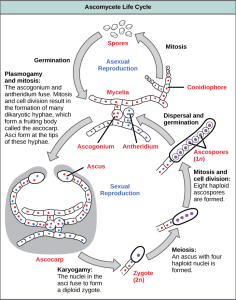Contents:
ASCOMYCOTINA
Subkingdom: Mycota
Division: Eumycota
Sub-division: Ascomycotina
- It is the largest group of fungi having more than 32,000 species in 3,400 genera
- it is also known as Sac- Fungi
- askos – bag or bladder and mykes – fungus
- It is characterized by the formation of an ascus
- This consists of molds that have septated hyphae and some yeasts


General Characteristics
- The spore formed by these fungi is known as ascospores which are sexually produced and are present within a sac
- They consist of both parasitic and saprophytic species
- They may be symbiotic
- The majority species are terrestrial but few are aquatic ie. marine and freshwater
- It is responsible for a few diseases like powdery mildew.
- They show both sexual and asexual reproduction.
- They produce the sexual ascospores and asexual conidiospores
Thallus Structure
- It may grow either as yeasts, i.e. unicells multiplying by budding or fission or as mycelia which consist of septate hyphae
- Mycelium is well developed with branched and septate hyphae
- Mycelium may be homokaryotic or heterokaryotic
- Some fungi may be dimorphic ie. they can switch from the yeast to the filamentous state or vice versa. Ex- Candida
Classification
It is subdivided into 6 classes-
- Hemiascomycetes- Mycelium is poorly developed or absent, No ascocarp formation
- Plectomycetes- Mycelium is well developed, branched and septate, Ascocarp is formed
- Pyrenomycetes- Mycelium well developed and septate, ascocarp are produced
- Discomycetes- Well developed mycelium, Sex organs are lacking
- Laboulbeniomycetes- Thallus is reduced, Ascocarp is formed
- Loculoascomycetes- Thallus is mycelial, Ascocarp is formed
Ascomycetes Examples
- Saccharomyces
- Xylaria
- Peziza
- Phyllachora
Reproduction
Reproduction may occur sexually or asexually.
Asexual Reproduction
1. By Formation of Conidia-
- These are exogenous and non-motile spores which are produced on the tip of conidiophores. They may be branched or unbranched and unicellular or multicellular
- Conidiogenesis occurs in two ways which appear to be distinct: blastic and thallic
- Blastic– The conidium develops by the blowing-out of the wall of a cell, mostly from the tip of a hypha
- Thallic- This occurs by conversion of a pre-existing hyphal element in which terminal or intercalary cells of a hypha become cut off by septa.
2. Other spore formations like Oidia or Chlamydospores- This may occur in some species.
Sexual Reproduction
Ascomycota have male and female gametangia in their haploid stage ie. antheridium and ascogonium respectively.
- Gametangial copulation
- Gametangial contact
- Plasmogamy– A single cell with two haploid nuclei. This creates a binucleate, dikaryotic condition in the ascogonium leading to karyogamy
- karyogamy– At the tip of the hyphae the nuclear fusion takes place
Diploid nucleus immediately undergoes meiosis followed by mitosis resulting in 8 haploid nuclei. Each nuclei accumulate cytoplasm, secrete a wall around it develop into an ascospore.
Life cycle

Economic Importance
- The species Neurospora crassa has been the subject of intensive genetical research
- Alcoholic fermentation by yeasts as the basis of the wine and brewing industries
- Antibacterial antibiotics such as penicillin from Penicillium chrysogenum and cephalosporin from Acremonium spp.
- Food production as in bread-making by yeast, cheese ripening by Penicillium roqueforti and P. camemberti
- Food spoilage may result from ascomycete contamination. ex- Claviceps purpurea
Reference
-
Introduction to Fungi, Third Edition
-
https://link.springer.com/chapter/10.1007%2F978-94-011-1496-7_4
More Topics To Read
- CLASSIFICATION OF FUNGI
- Mastigomycotina: Classification, Characteristics and Reproduction
- Zygomycotina: Classification, Characteristics and Reproduction
- Basidomycotina: Classification, Characteristics and Reproduction
- Deuteromycotina: Classification, Characteristics and Reproduction